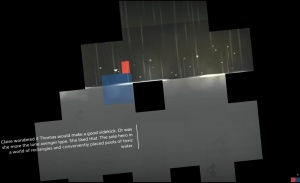Lately I’ve been playing a lot of Rust. It’s a great sandbox PvP game but it has some frustrating balancing that makes solo play a chore at times and currently disproportionately favours group play. It got me thinking about the problems with balancing solo play versus group play. So I’m going to to try to expand on my thoughts about the issue through the example of Rust.
To begin with let’s state some premises, these may not be valid for your own vision but I think they are common to most persistent games with PvP:
- Group play will in general always be superior to playing by yourself.
- Playing by yourself should be viable without a huge time commitment.
- Live player interaction is preferred.
In general games tend to balance activities through resource acquisition and the cost in resources of achieving something. Grinding to get materials to build a base and grinding to get materials to raid a base are staples of Rust. Ultimately it’s about optimising the time taken to achieve the desired goal. The problem is that these activities scale really well as you add more people so groups are by far the dominant strategy and quickly significantly out power individuals. Our goal as game designers based on the premises above is to keep the gap between groups and solo players reasonable such that whilst solo players may never challenge giant groups they can enjoy the broader metagame.
One great way of achieving this is balance on an orthogonal axis, skill. Rather than making the game hard by forcing you to spend a lot of time gathering, crafting and building a root to the objective is also available through skill. Rust actually has this in various parts. For example the bow in the game is resource cheap, takes a reasonable amount of skill to wield effectively and can take down kitted out players. It’s suboptimal in comparison to the high resource cost guns in the game but its a viable way to get one that relies on skill rather than time. Outside of systems design there is some great social engineering metagaming that people use to effectively give themselves a leg up.
Whereas the bow is a great example of balancing skill versus time raiding other peoples bases in Rust takes the opposite tack. As it takes a lot of resources and time to construct a base raising has been similarly balanced that destroying a base also takes a lot of time and resources. It’s also much safer with no negative consequences to raid a base whilst the occupants are offline. This isn’t inherently wrong but it does put solo players at a huge disadvantage as group advantages essentially mean they can raid solo players at will with very little chance of there being any repercussion. Part of the issue here is that the only way to successfully raid a base is through destruction. It’s a straight up case of “how much do you want to pay to get the stuff in here?”. Players can optimise this somewhat by intelligently working their way to the bases loot but ultimately there is only a small skill component to raiding in comparison to the massive amount of time sunk in resources. The solution? Well we don’t necessarily want to make bases easier to destroy but adding a skill component seems feasible.
On Code Locks and Key Locks
Currently there are two tiers of doors in Rust. A regular key lock that lets you craft keys from it which take up inventory space and can be given or looted to gain access to a door. A code lock that has a four digit pin that you can share with friends to give them access to the door. It’s worth noting that both can be brute forced with key locks having less combinations but being more laborious to actually try each at present. The former also costs less than the latter. In my time in Rust I’ve used one key lock when I was green but since then nothing but code locks as the advantages of the latter are huge.
The easiest solution I’ve thought of is to remove Code Locks. As noted above keys are physically present items that give you access where as codes are remembered and as such intangible. This puts us squarely in the territory of skill, you must fight to protect your keys or bury them in a stash (a small container that can be buried and only reappears if someone looks at it for a small amount of time) both are vulnerable to interception. This provides a skill based, non-destructive and player interaction based mechanism for solo players and groups to get access to a base. Clearly groups still have an advantage but as with the bow example solo players can also successfully use it against groups. There are a bunch of QoL improvements that would need to be made to make this a good implementation but it demonstrates the idea.
Further solutions could include audible tone differences on code locks that can be overheard, some form of systems based skill test to bypass a code lock (which could be extended to other items), much more expensive code locks and completely different systems targeting other parts of raiding.
TL;DR
When looking at balancing game systems with one another in games that support both solo and group play don’t just consider resource cost adjustments as you’ll be lopsidedly punishing solo players and eventually smaller groups. Instead look at skill based systems that whilst still giving groups an advantage also mean that solo players can still take part without the game becoming onerous.





